5) Nematode Eggs and Larvae
1/31
There's no tags or description
Looks like no tags are added yet.
Name | Mastery | Learn | Test | Matching | Spaced |
|---|
No study sessions yet.
32 Terms
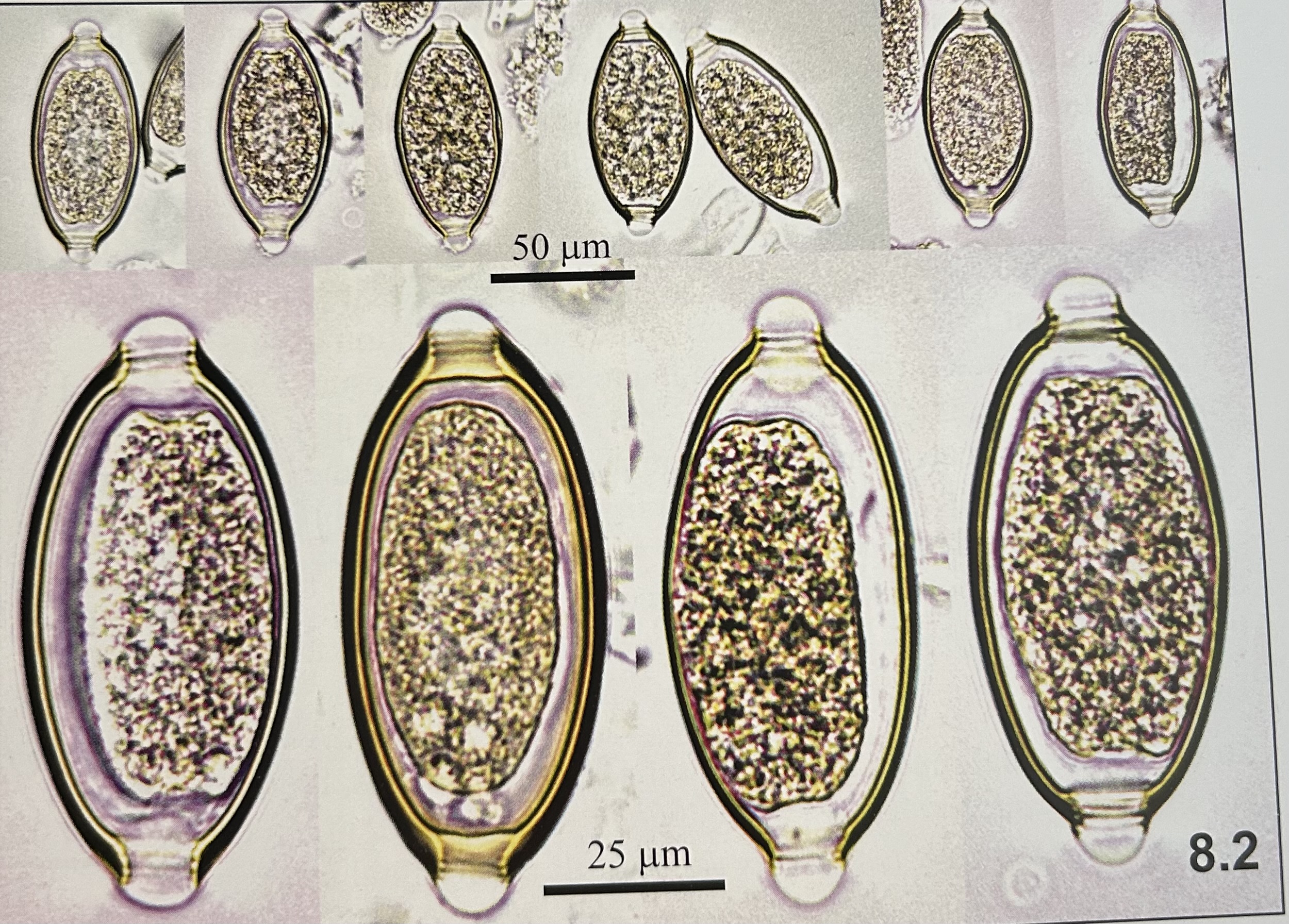
genus and species?
Trichuris trichiura (egg)
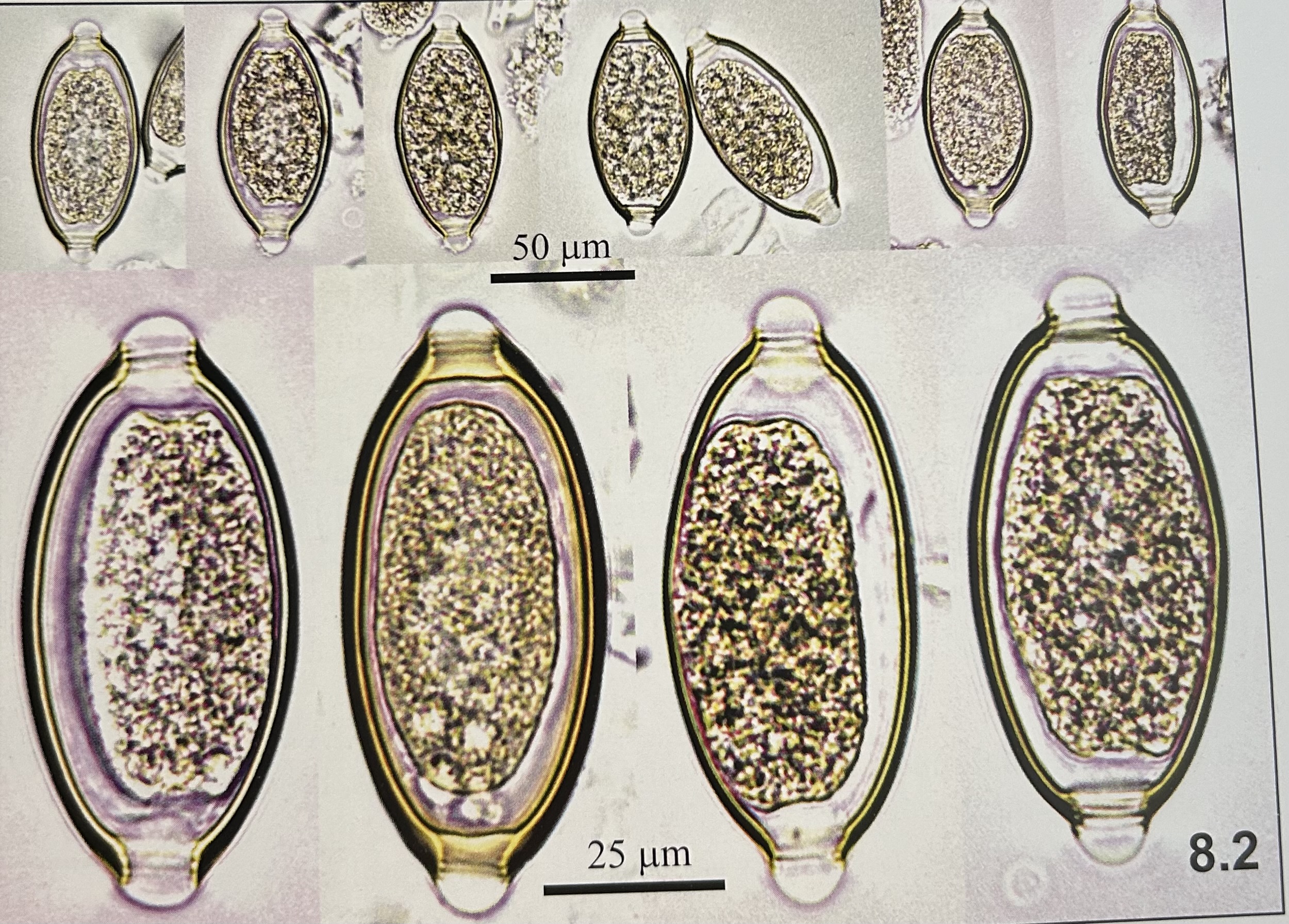
characteristics of Trichuris trichiura (egg)?
symmetrical barrel shape
plugs on each end
embryonation requires 2 weeks

developmental stage?
Trichuris trichiura (egg)
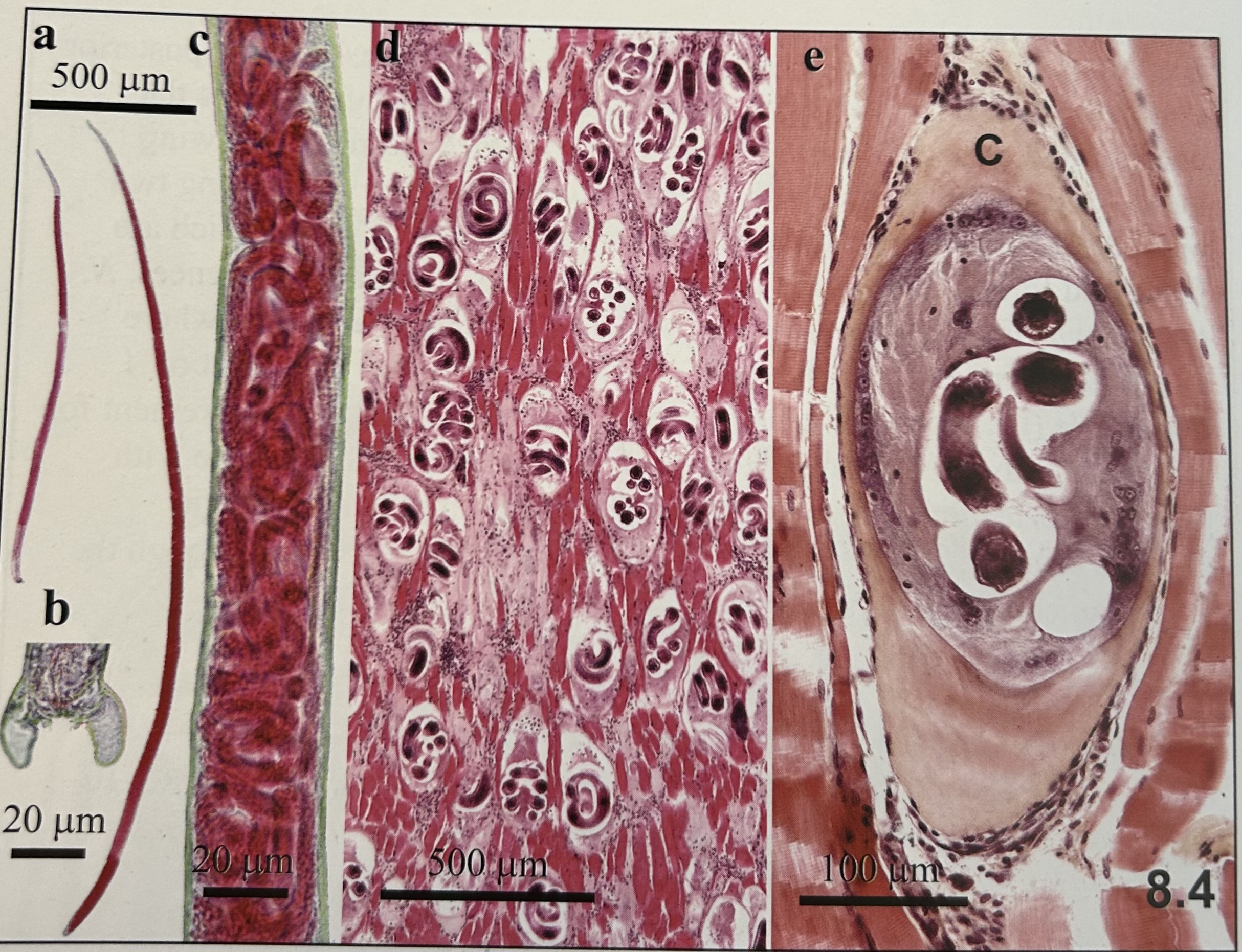
genus and species?
Trichinella spiralis (adult in intestinal mucosa)?
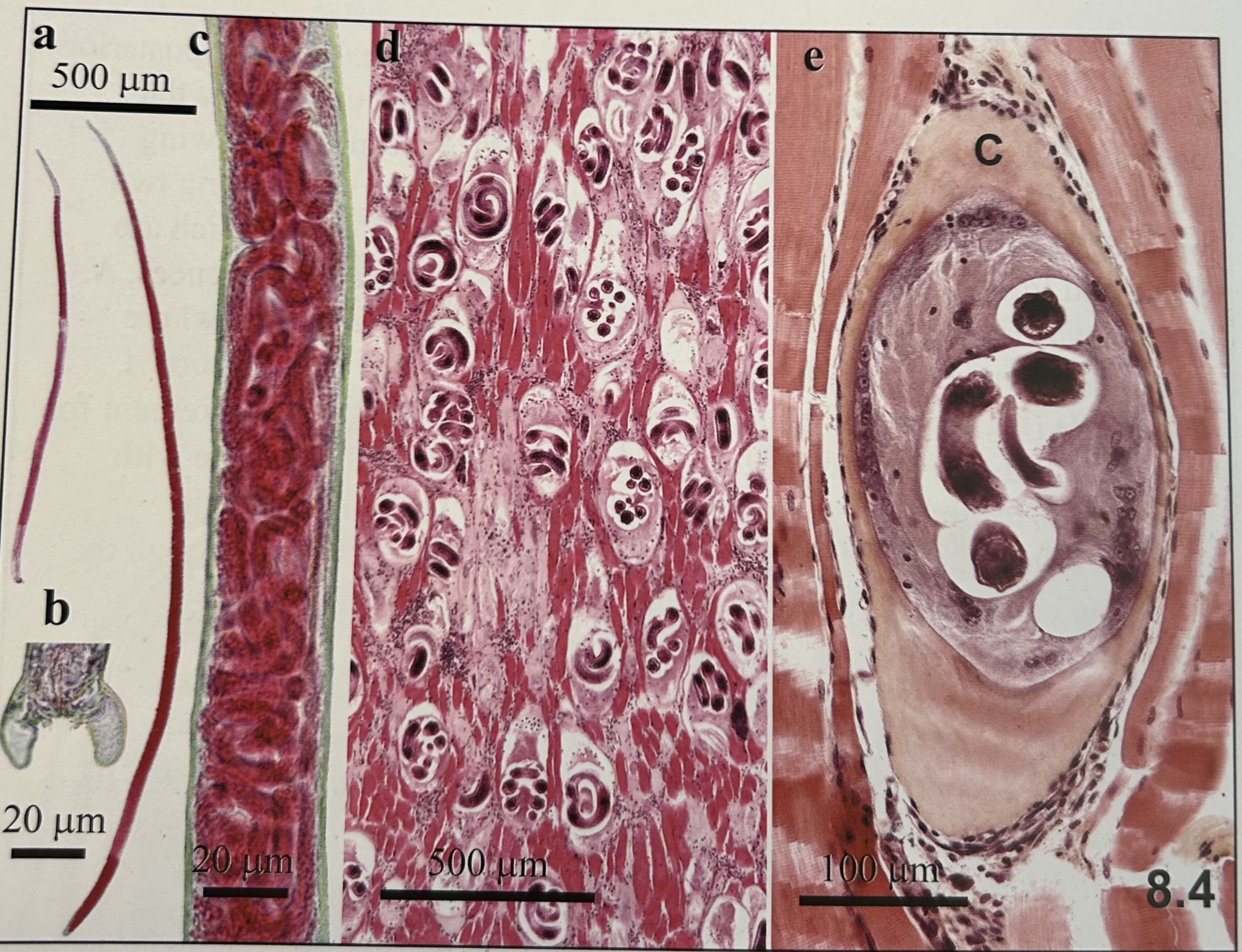
characteristics of
Trichinella spiralis (adult in intestinal mucosa)?
b. posterior end of male showing pseudobursae and papillae
c. adult female w/ L1s.
d. larvae in muscle
e. thick collagen capsule (C)
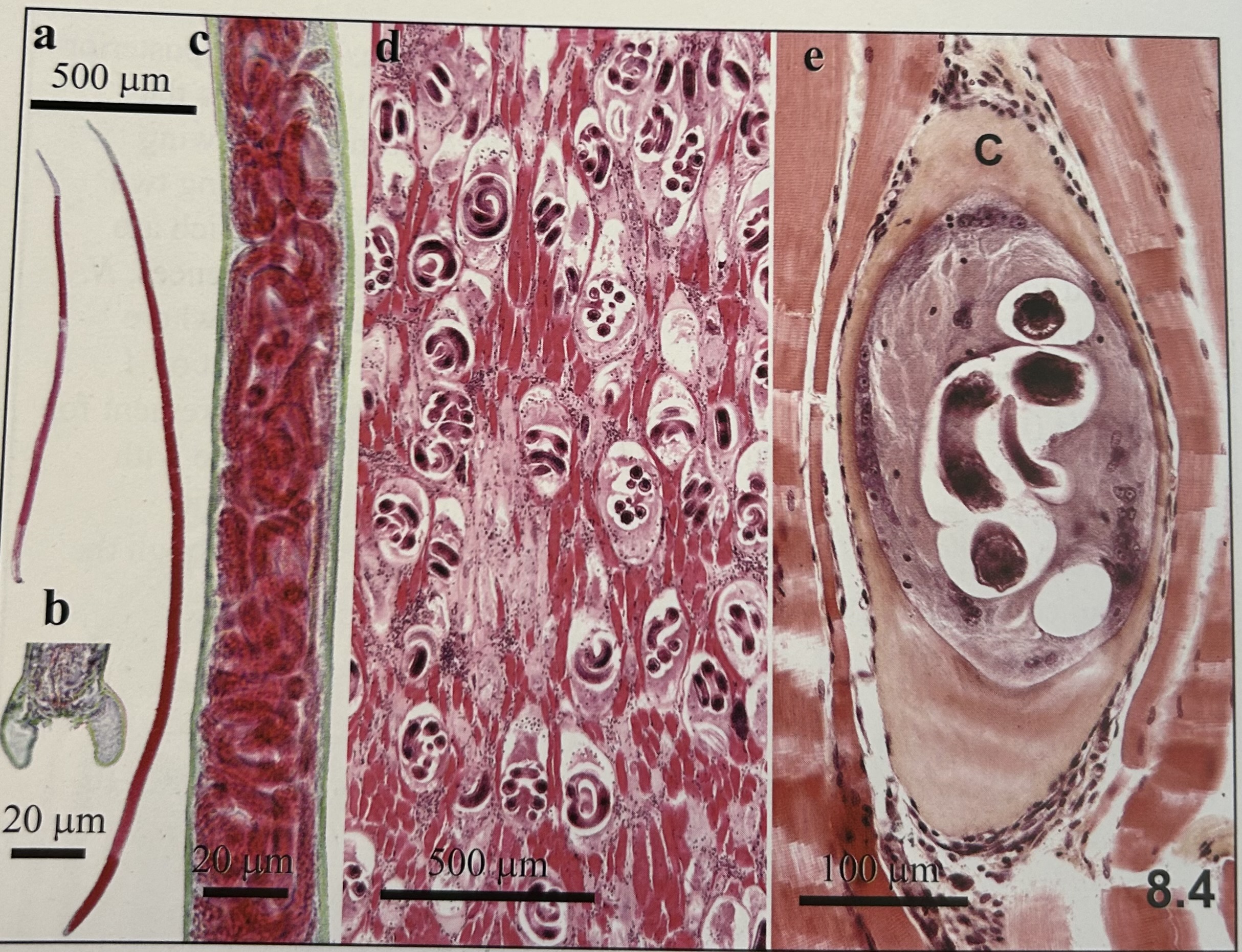
developmental stage?
Trichinella spiralis (adult larvae in intestinal mucosa)
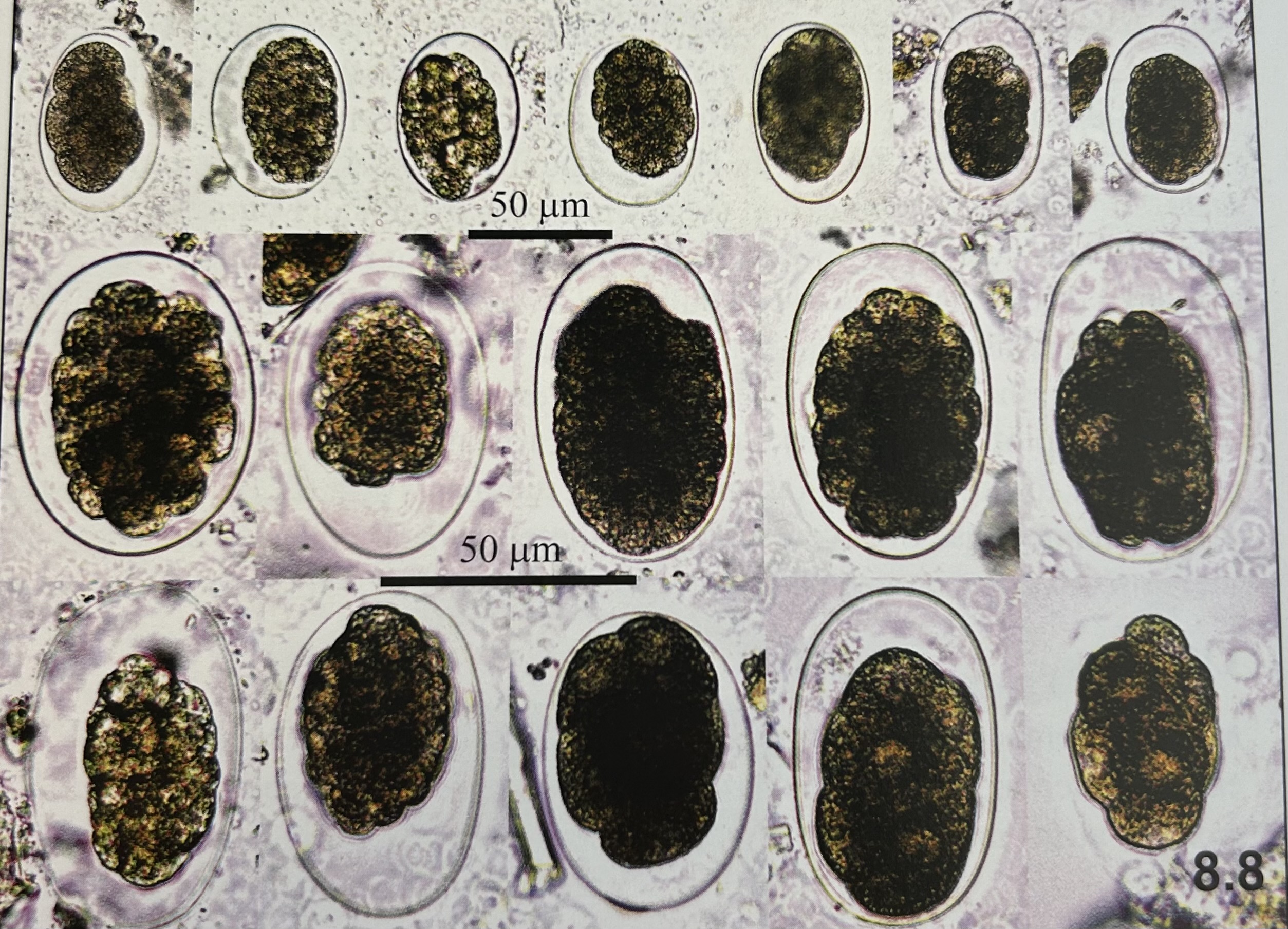
genus and species?
Necator americanus (hookworm eggs)
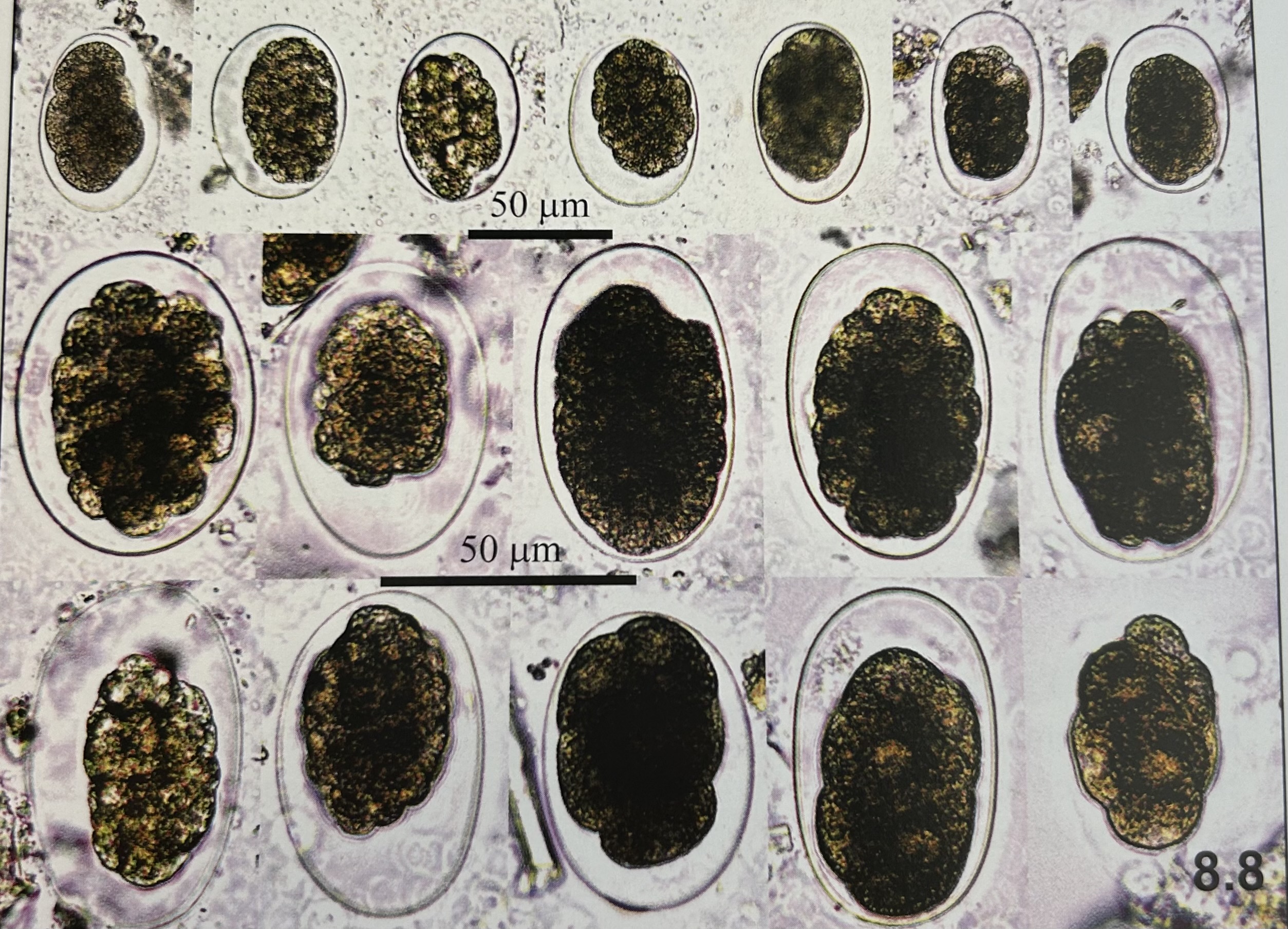
characteristics of
Necator americanus (hookworm eggs)?
embryo surrounded by thin shell
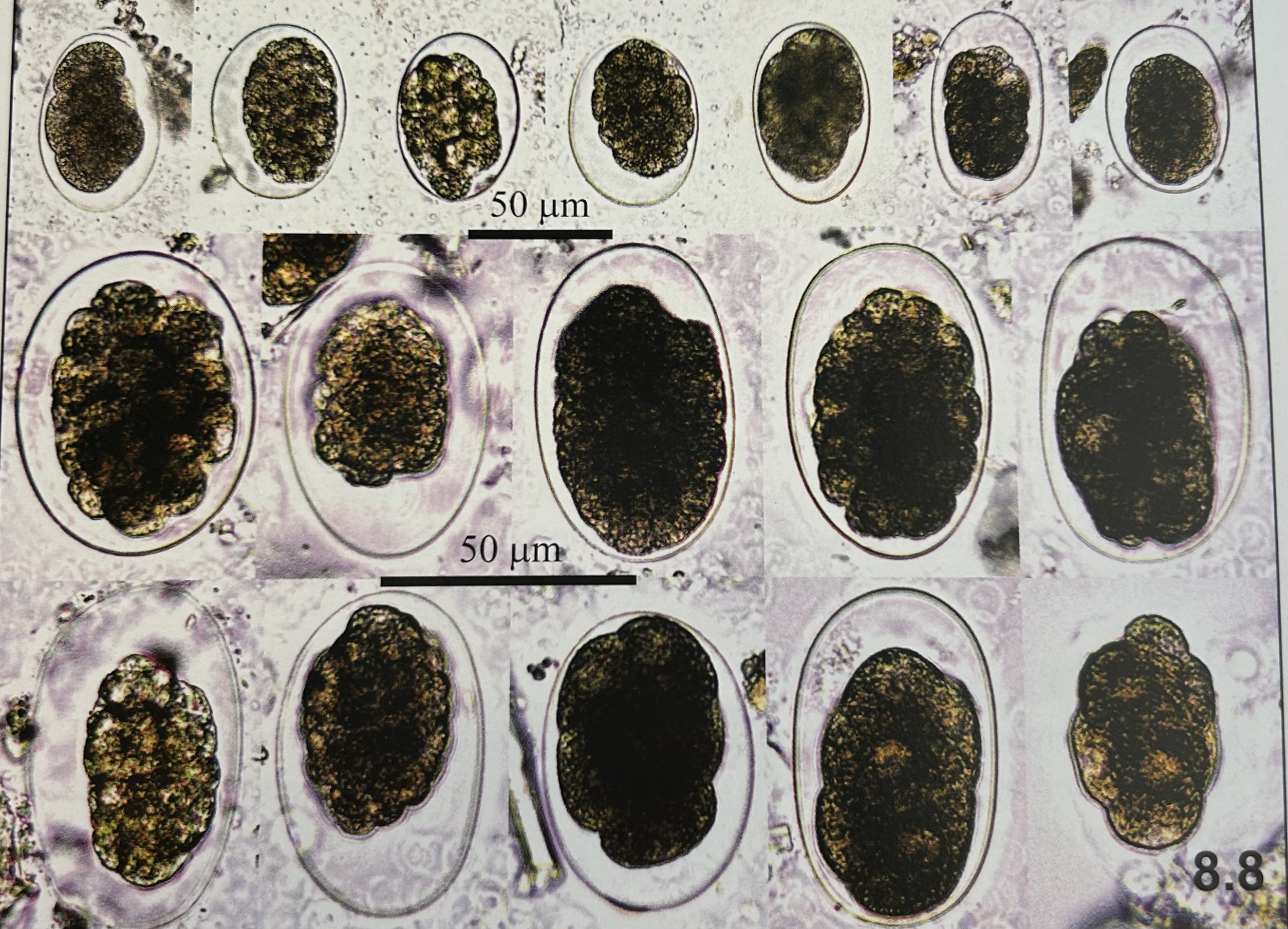
developmental stage?
Necator americanus (hookworm eggs)
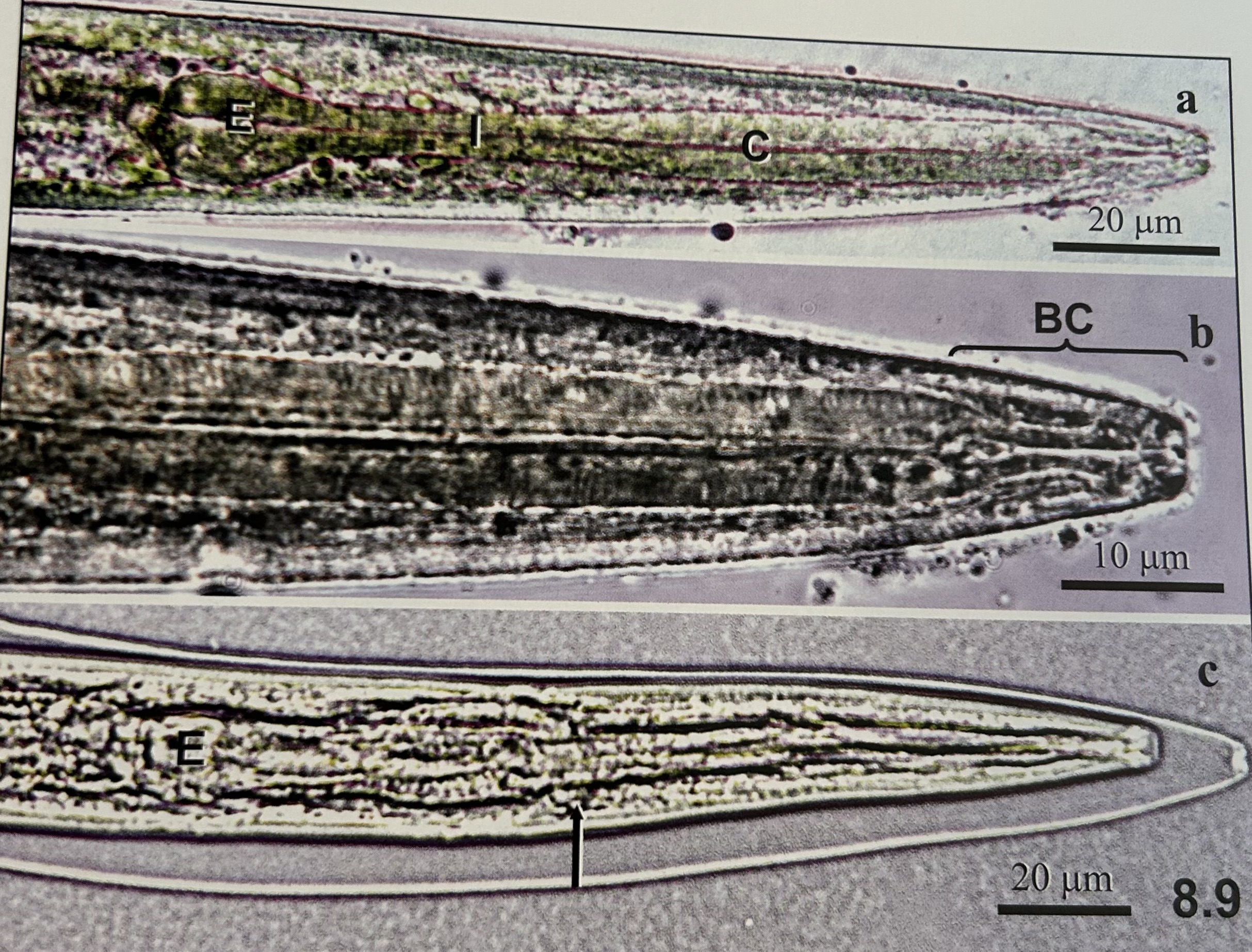
genus and species?
Rhabditiform vs. filariform larvae
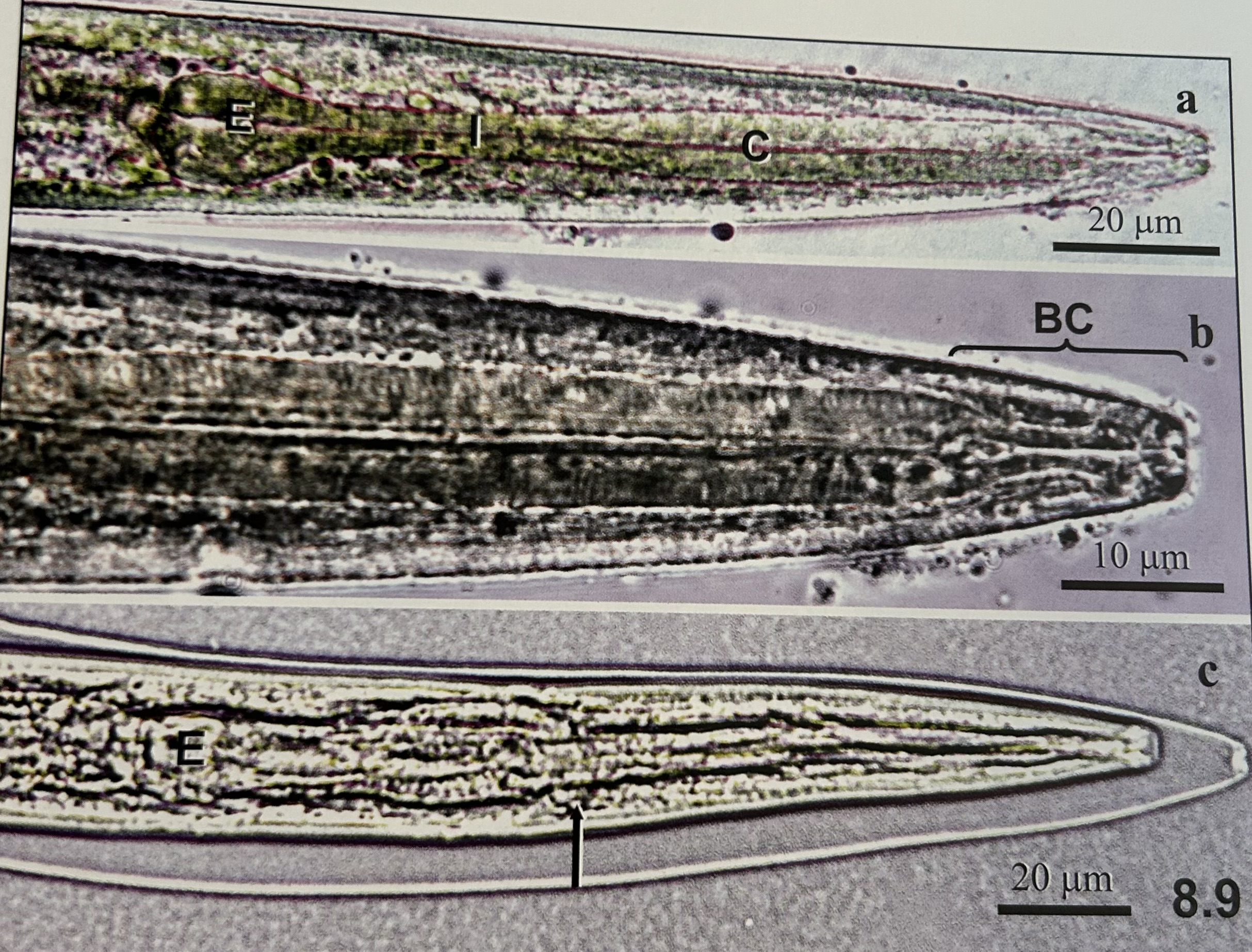
characteristics of Rhabditiform vs. filariform larvae?
a. anterior end of rhabditiform (L1) hookworm larvae
corpus (C)
isthmus (I)
end bulb (E)
b. large buccal capsule (BC)
c. filariform (L3)
no isthmus, but end bulb (E) present
nerve ring (arrow)
infective larval stage

developmental stage?
Rhabditiform vs. filariform larvae
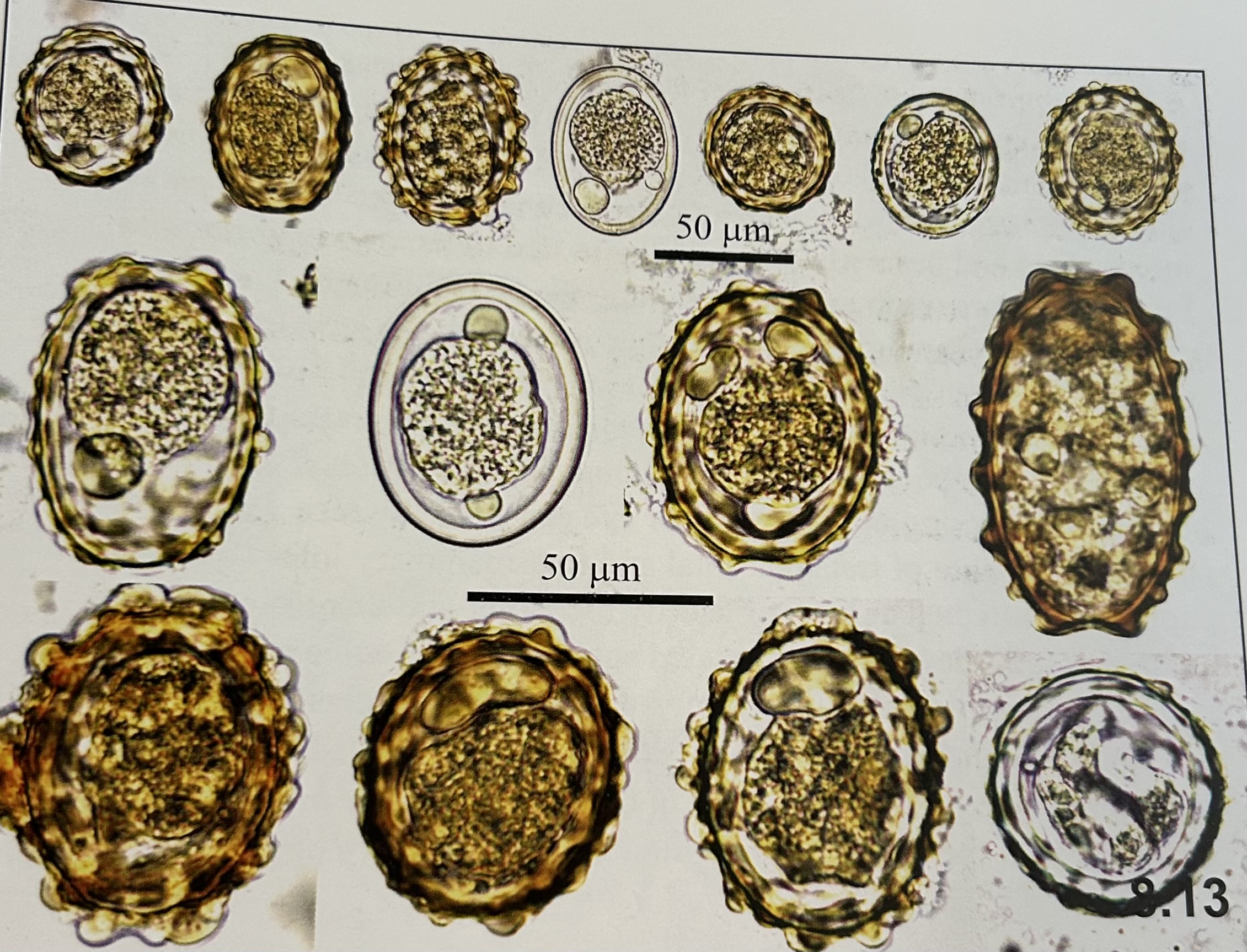
genus and species?
Ascaris lumbricoides (eggs)
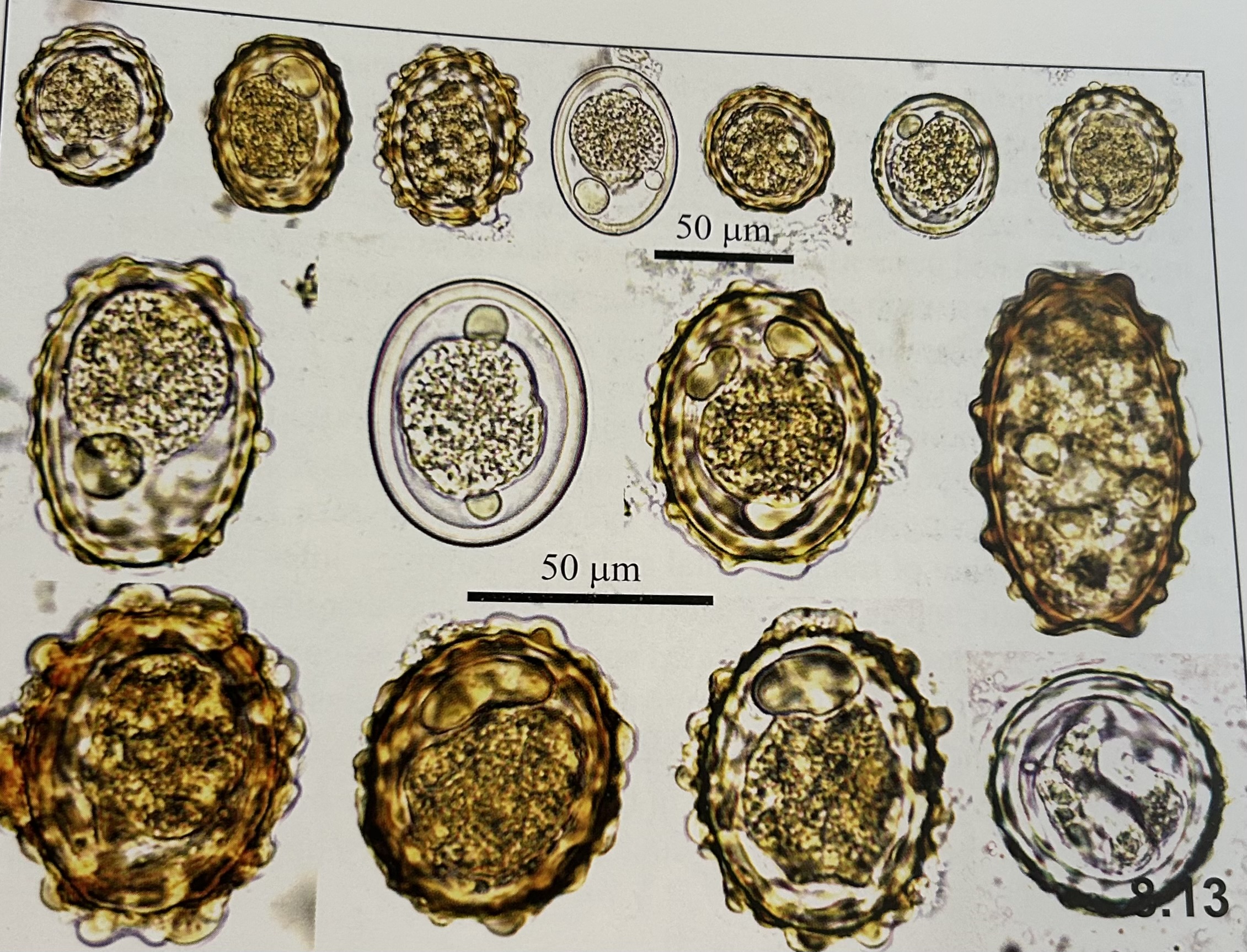
characteristics of
Ascaris lumbricoides (eggs)?
outermost shell = proteinaceous and bumpy
uncleaved embryo in feces
L3 in 2-6 weeks
can appear smooth
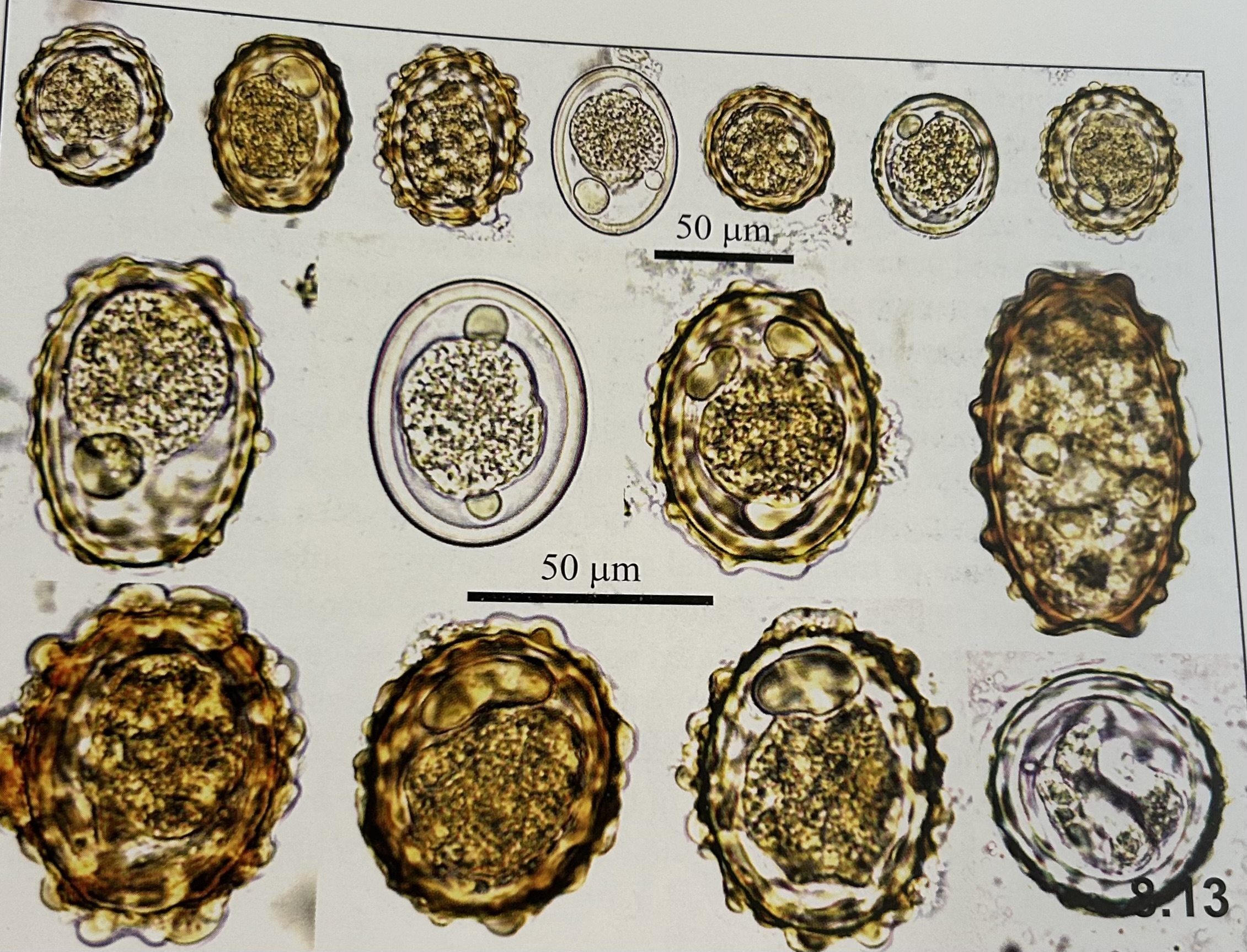
developmental stage?
Ascaris lumbricoides (eggs)
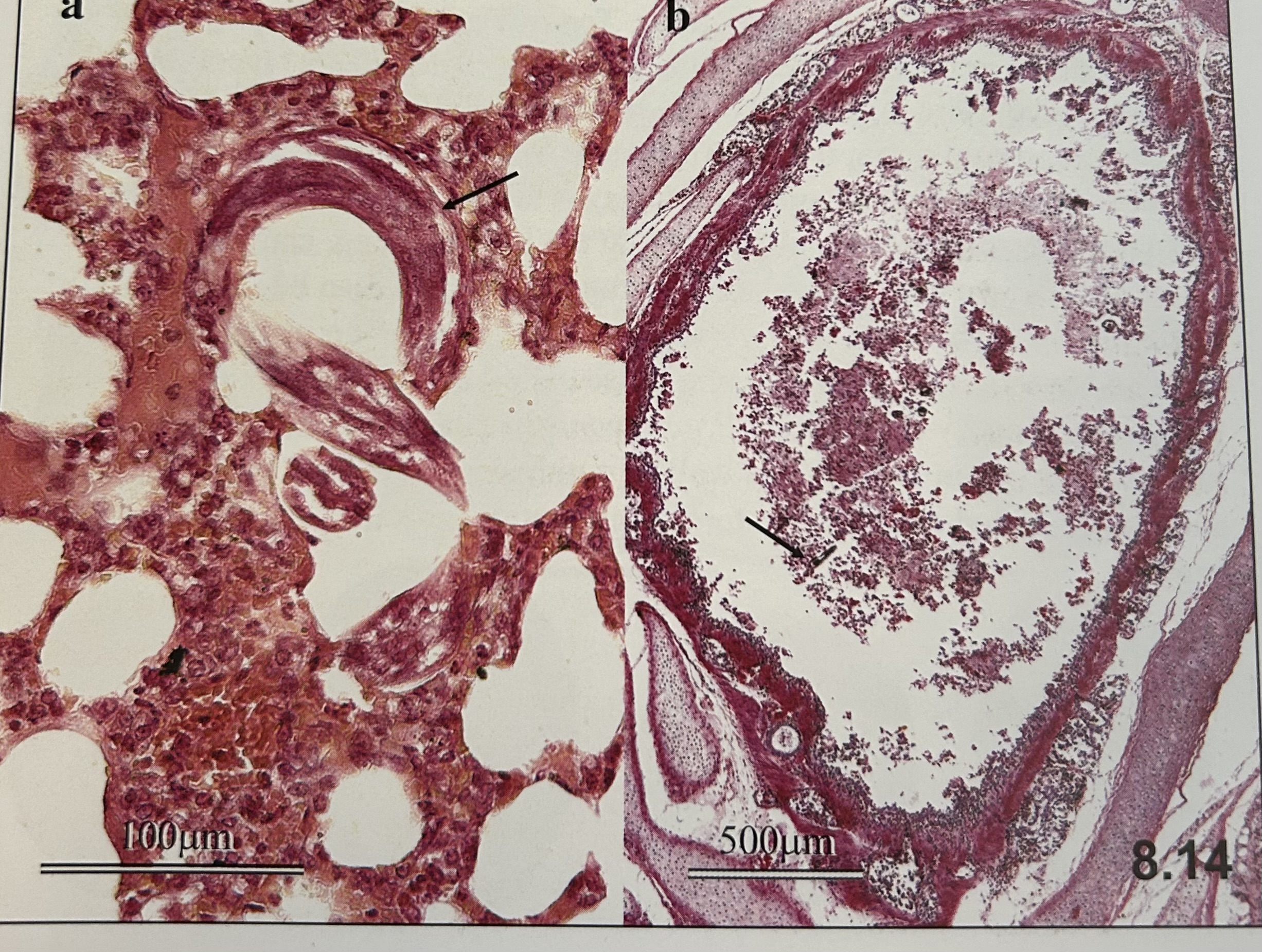
genus and species?
Ascaris lumbricoides (larvae in lungs)
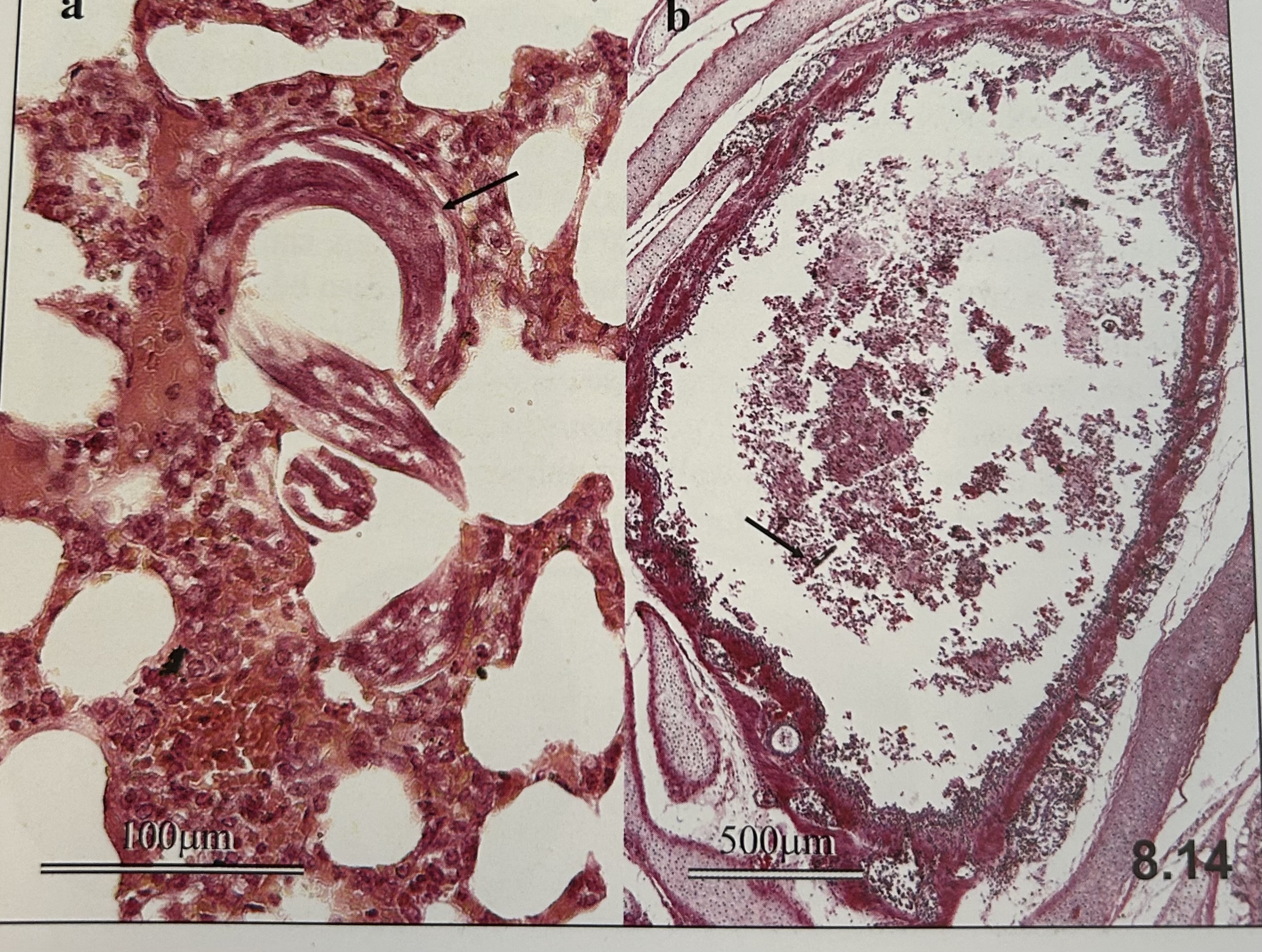
characteristics of
Ascaris lumbricoides (larvae in lungs)?
Larva (arrow) breaking into alveolus
b. Bronchus w/ inflammatory cells, and larvae (arrow) traveling up to pharynx

developmental stage?
Ascaris lumbricoides (larvae in lungs)
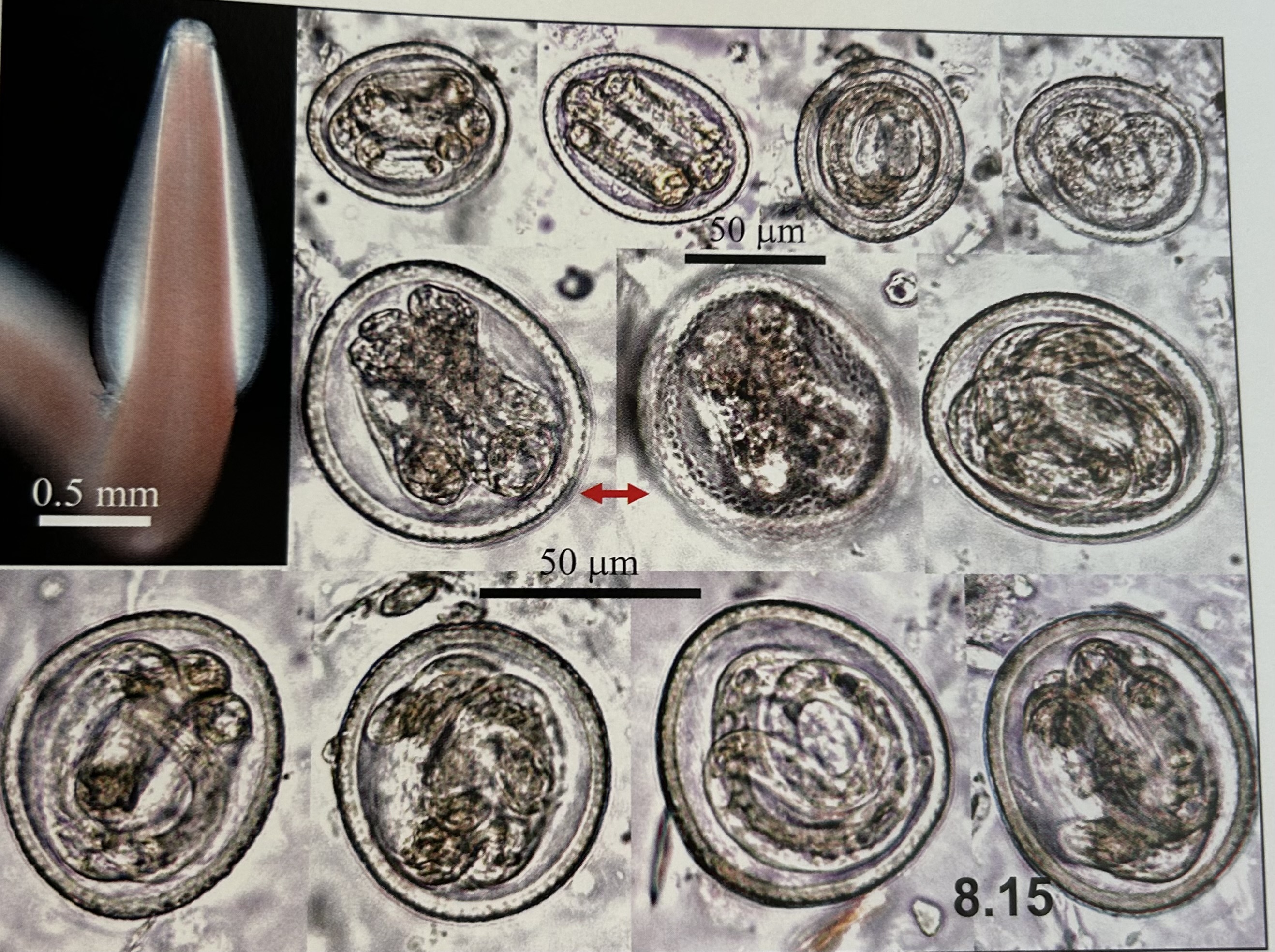
genus and species?
Toxocara canis (embryonated eggs)
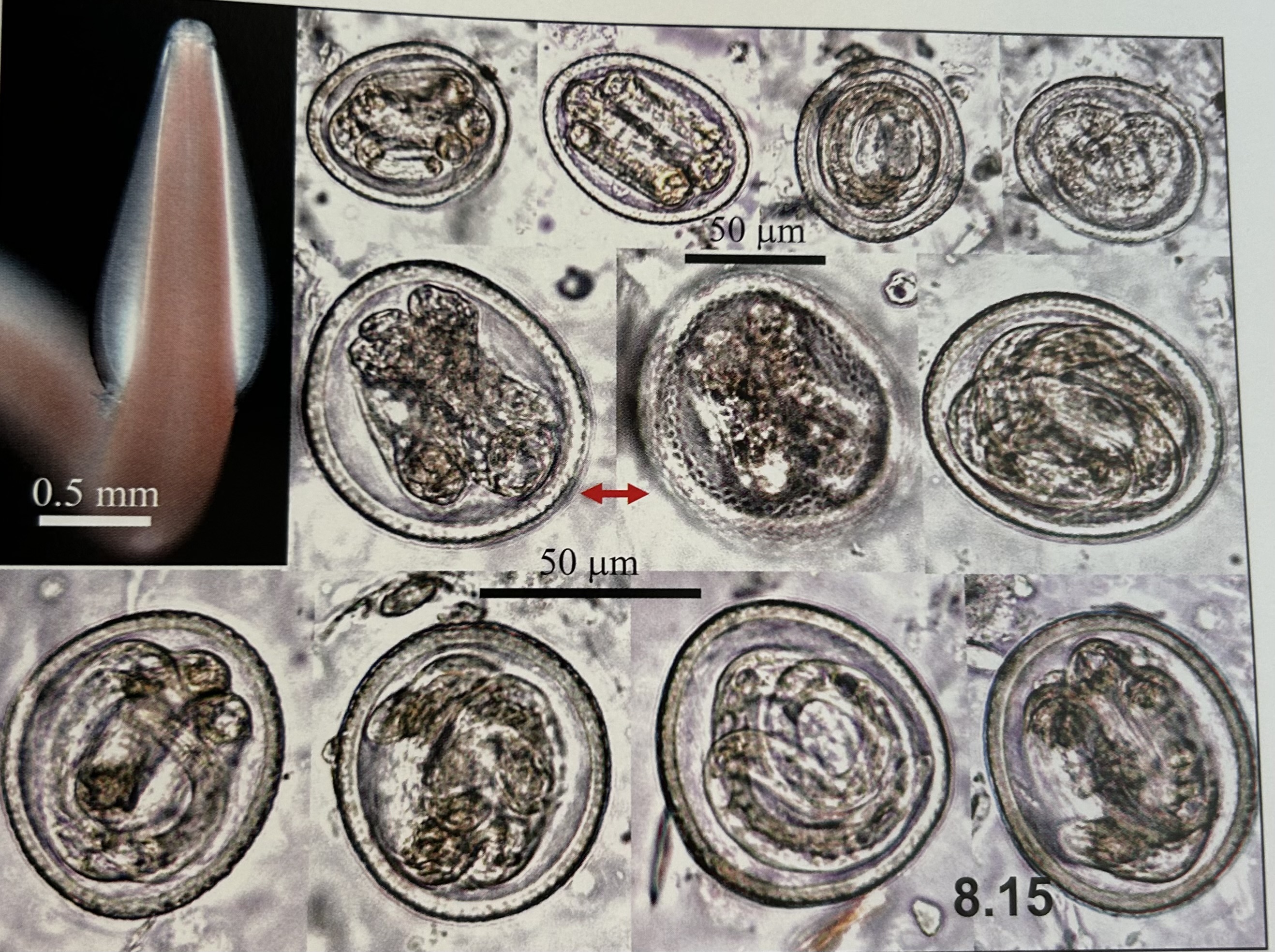
characteristics of
Toxocara canis (embryonated eggs)?
golf ball like
contains L3
doesnt develop into adults in humans, only dogs
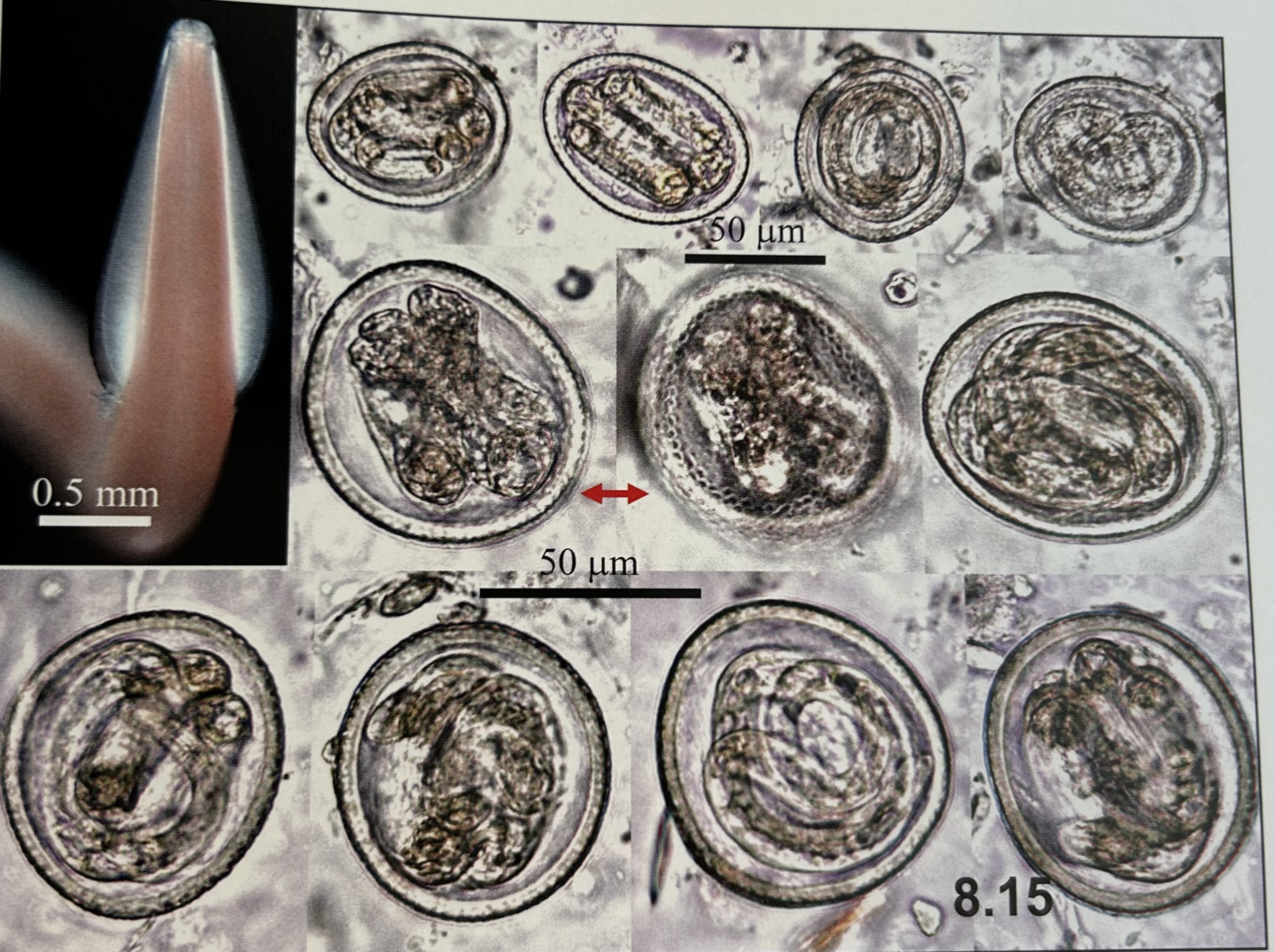
developmental stage?
Toxocara canis (embryonated eggs)
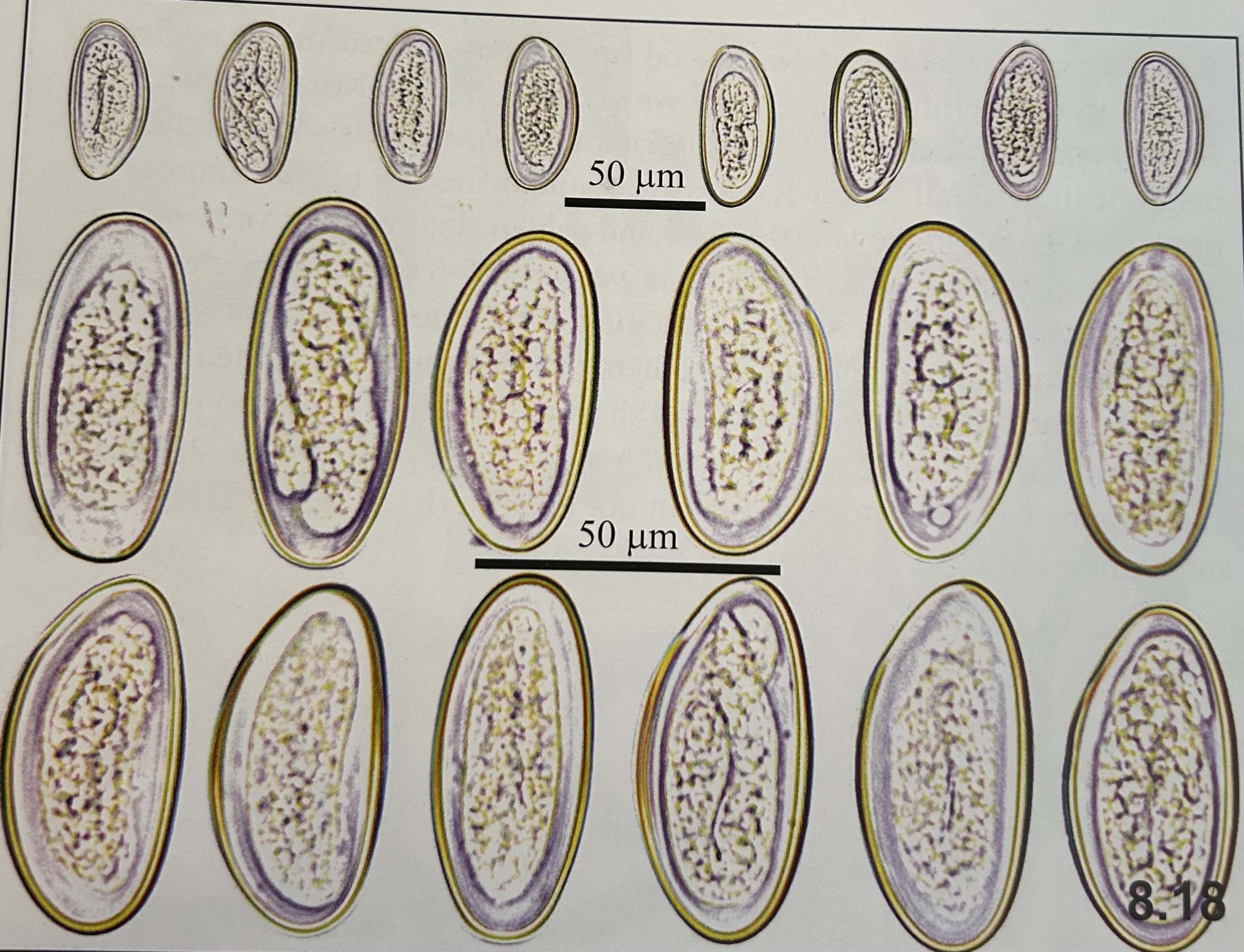
genus and species?
enterobius vermicularis (eggs)

characteristics of
enterobius vermicularis (eggs)?
embryonate after 6 hours
contaminated bed sheets, clothing, air
serve as delivery of trophozoites of dientamoeba fragilis
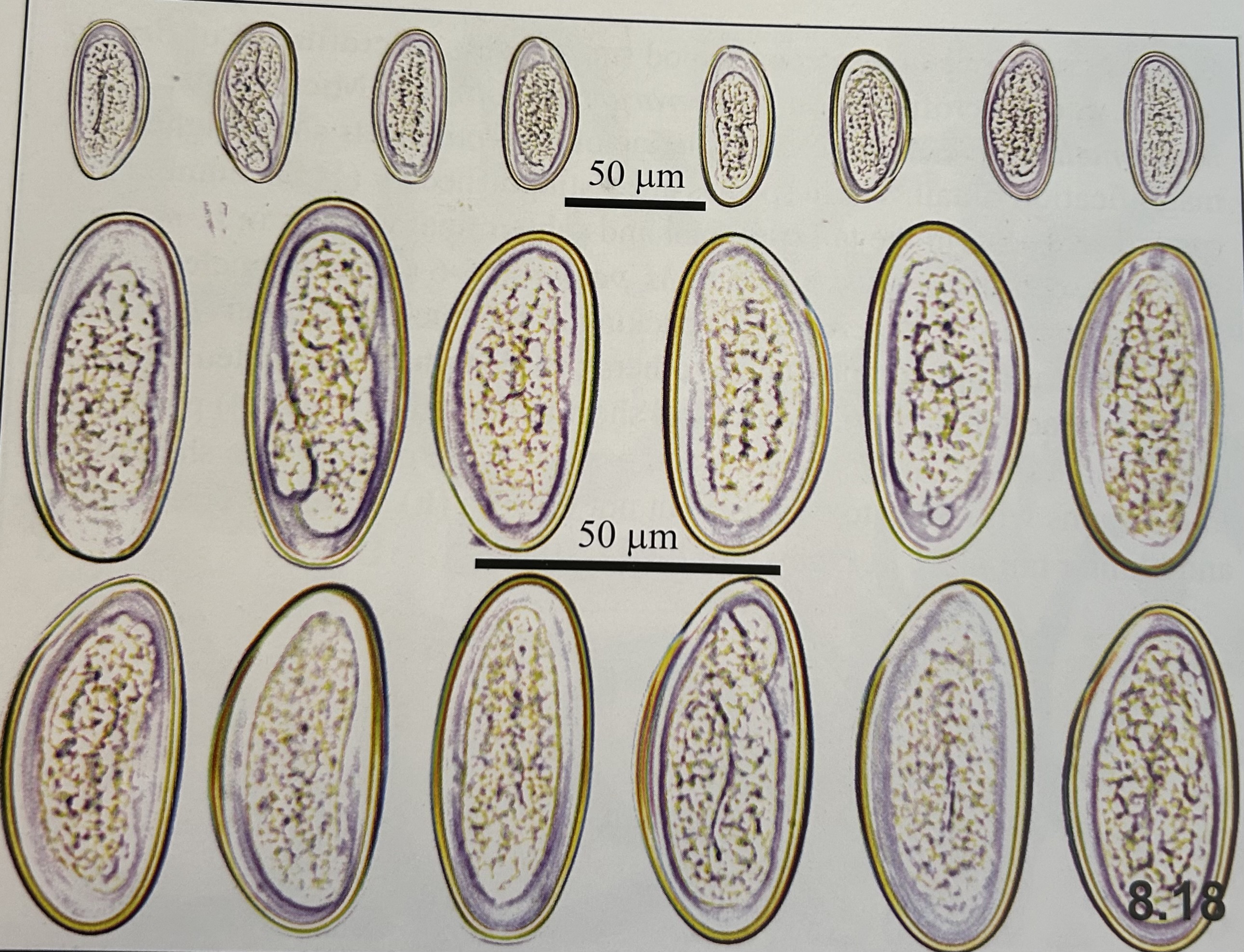
developmental stage?
enterobius vermicularis (eggs)
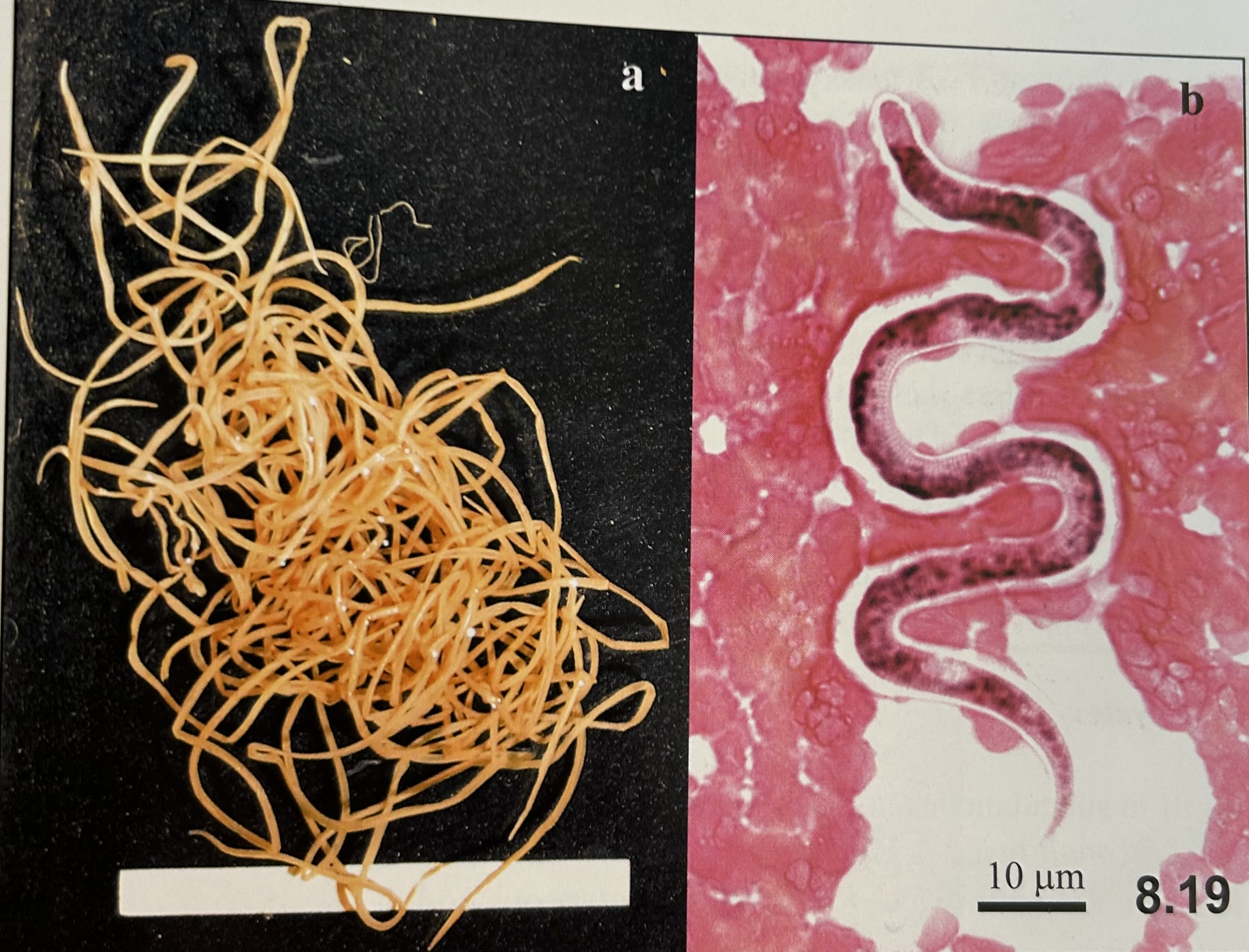
genus and species?
Dirofilaria immitis (adults)
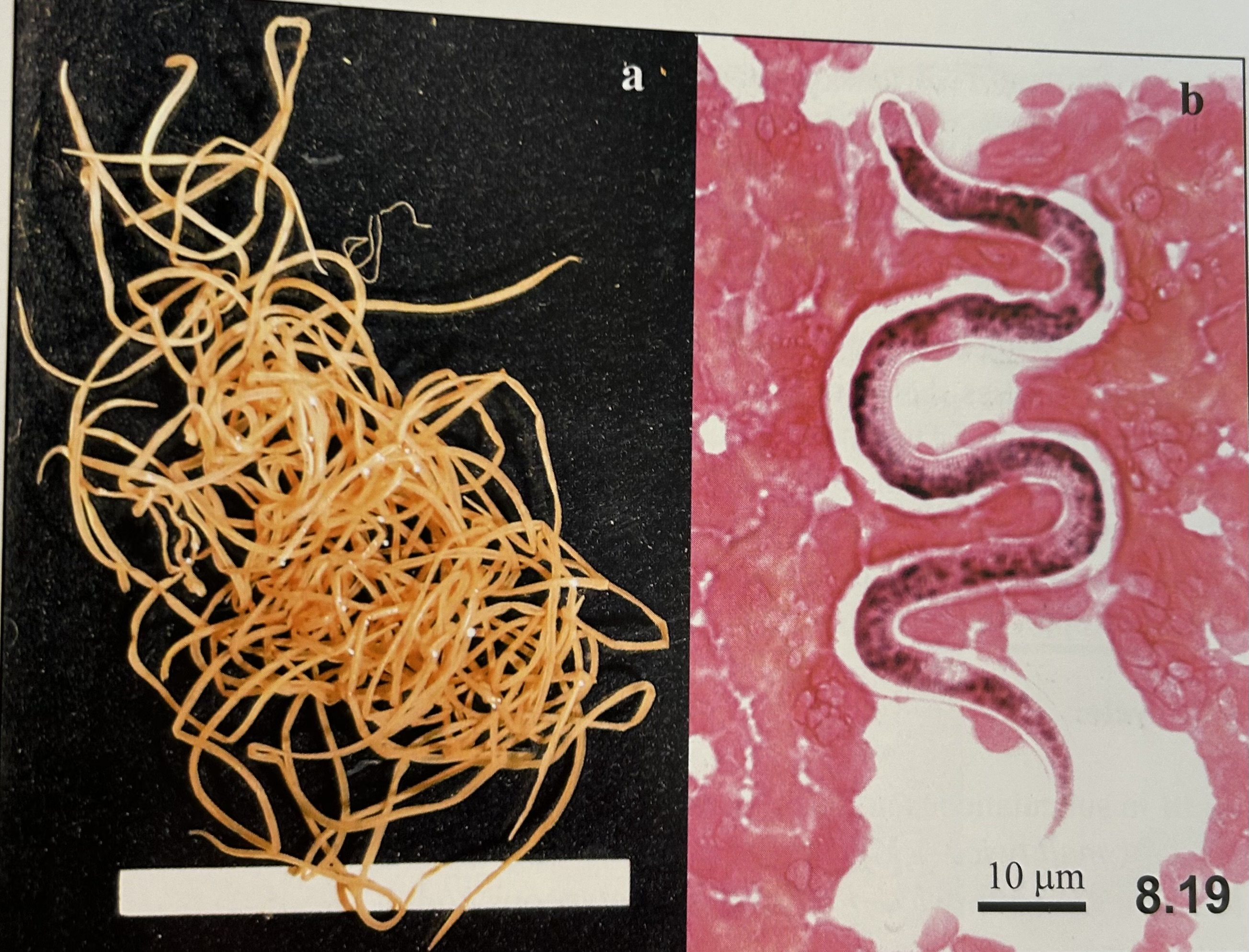
characteristics of
Dirofilaria immitis (adults)?
threadlike appearance
microfilaria (incompletely developed L1) in peripheral blood smear
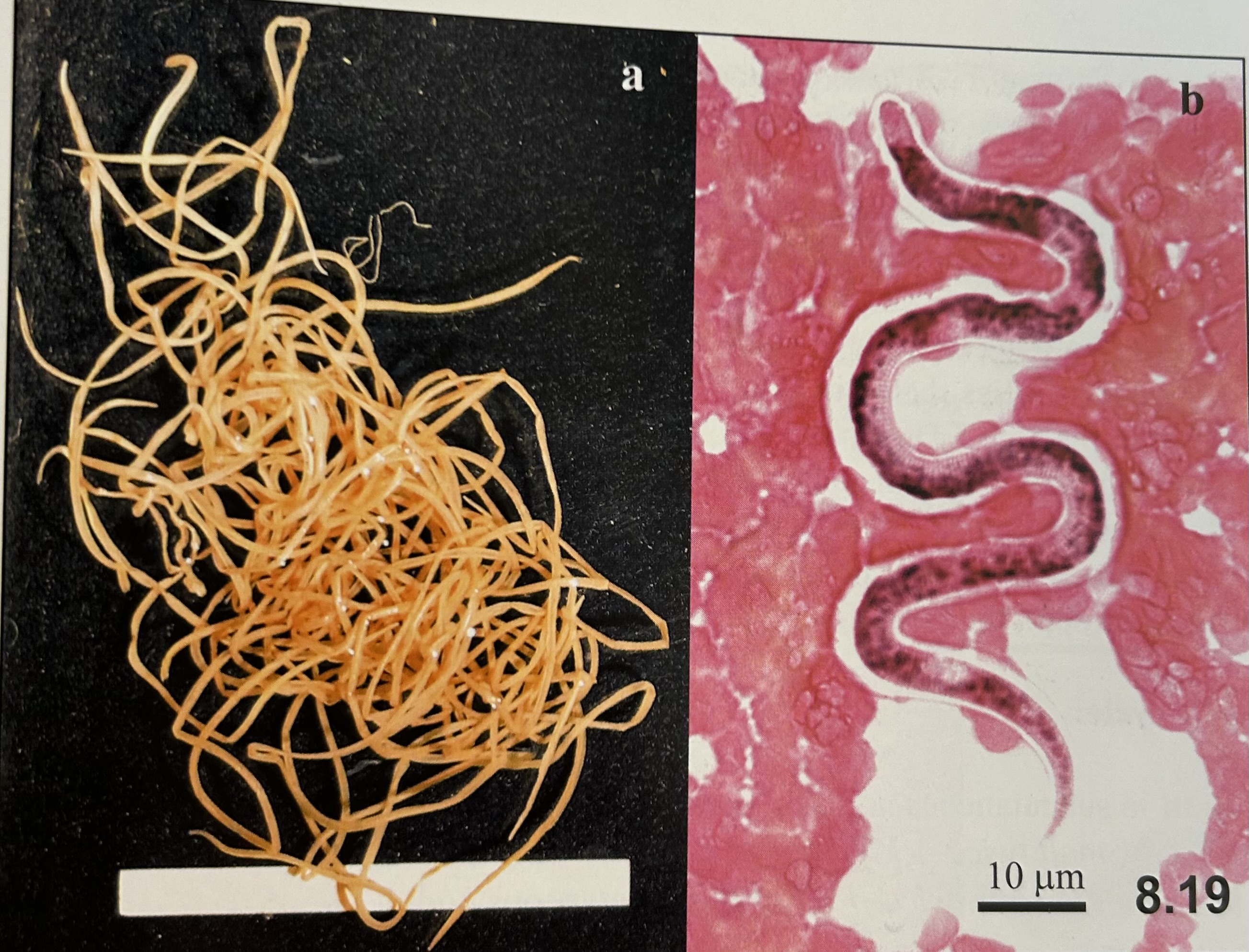
developmental stage?
Dirofilaria immitis (adults)
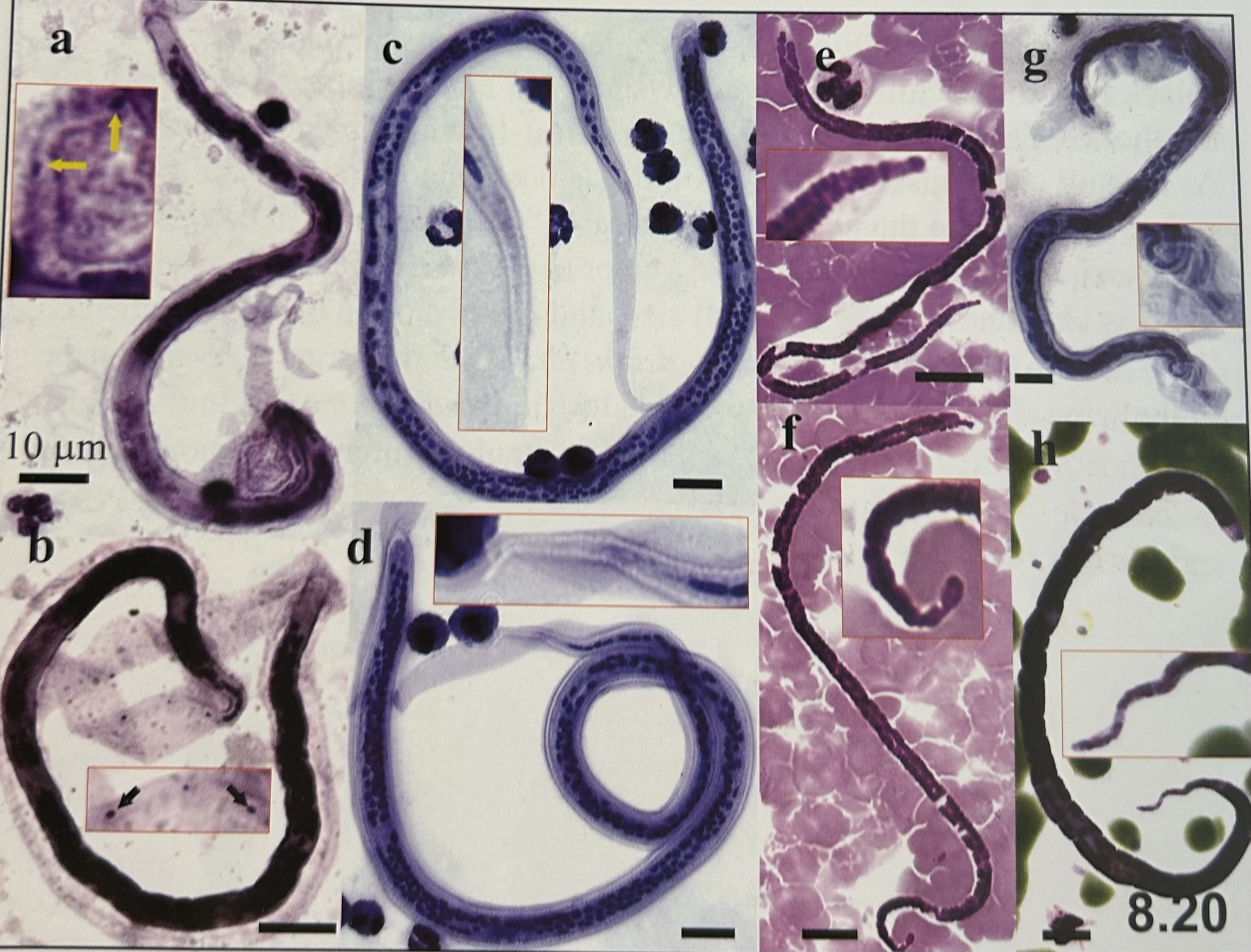
genus and species?
Microfilariae in peripheral blood smears
Brugia malayi (a and b)
Wucheraria bancrofti (c and d)
Loa loa (g and h)
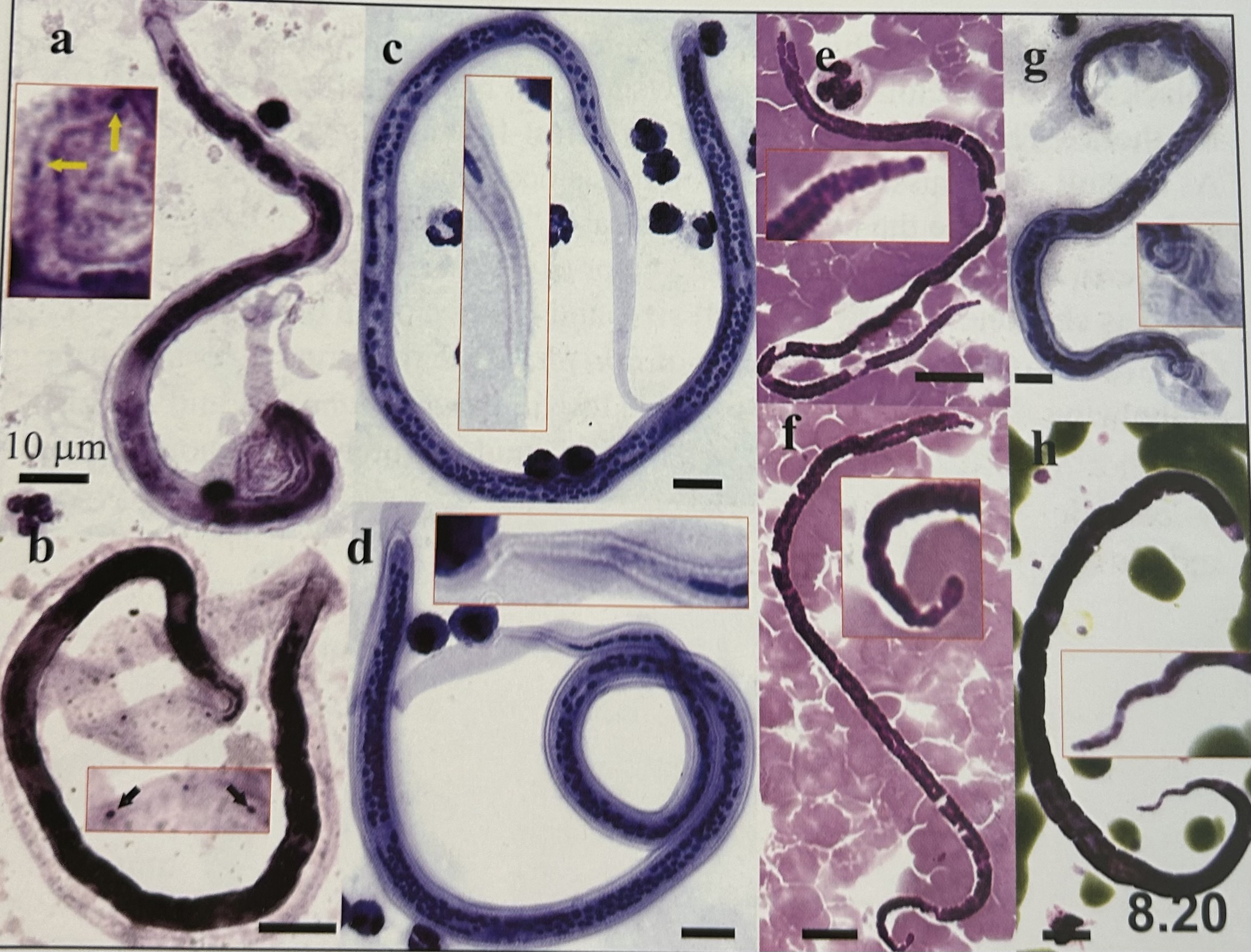
characteristics of microfilariae in peripheral blood smears?
number of tails and spacing of nuclei
Malayi has terminal and subterminal nuclei in tail
Banfrofti has none
Perstans has densely packed nuclei
Loa loa has 5-6 scattered nuclei
packing of nuclear column
dispersed in W. bancrofti and compact in others
length of nucleus-free cephalic space
long in malayi and short in others
presence of a sheath
absent in M. perstans and present in others
L. loa stains with hematoxylin (g) but not Giemsa (h)
perstans has smaller size and blunter tail
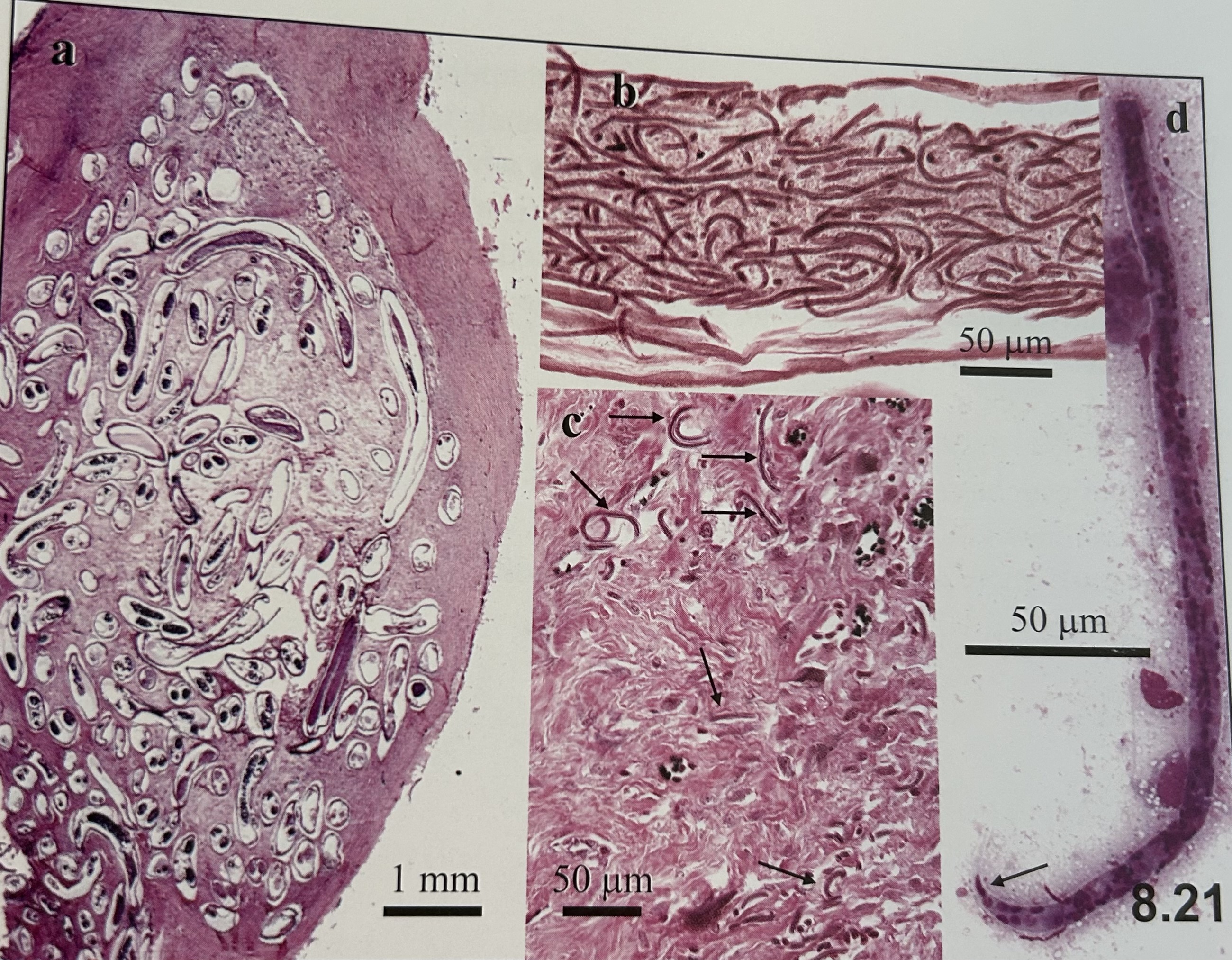
genus and species?
Onchocerca volvulus (adult)
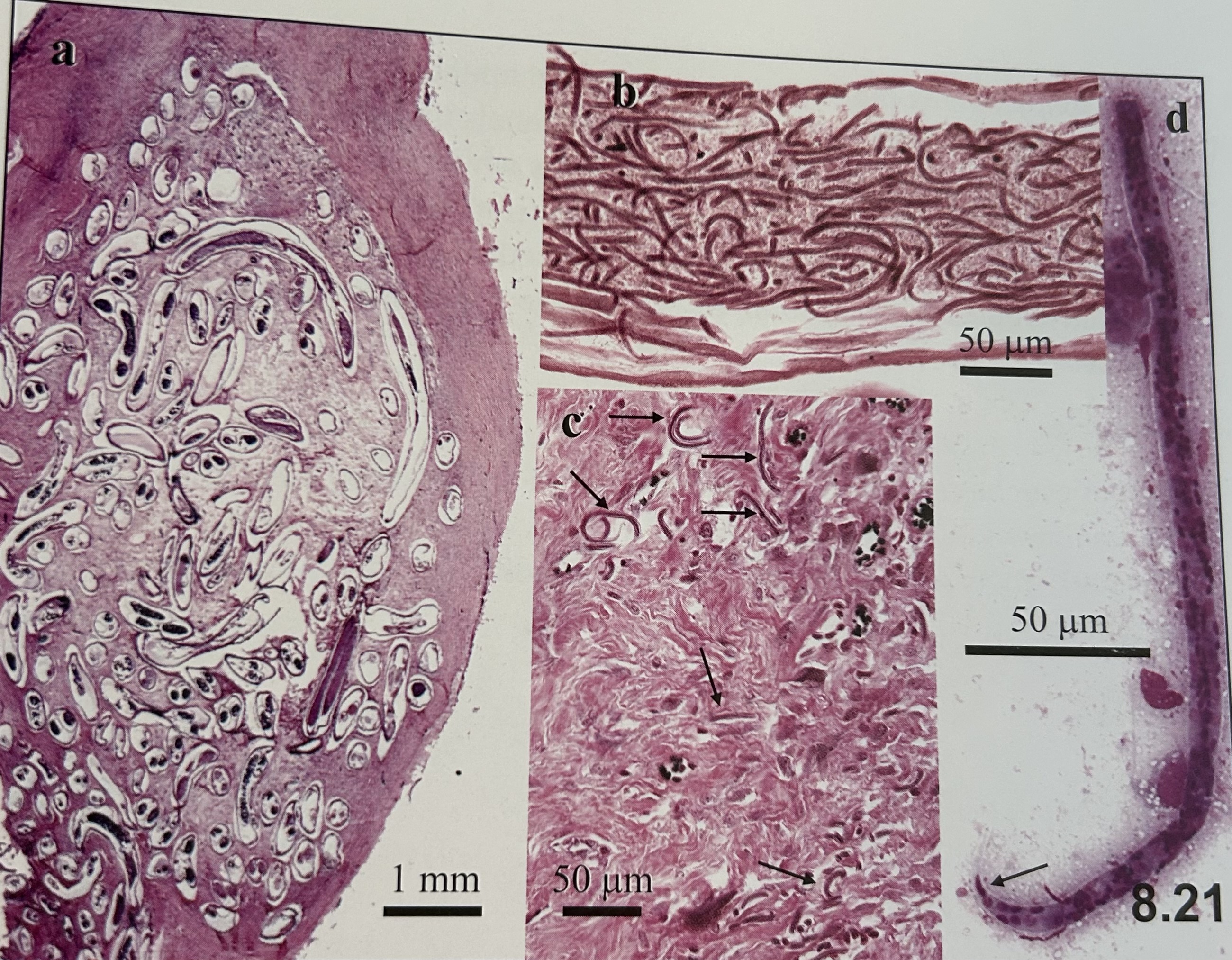
characteristics of
Onchocerca volvulus (adult)?
b) microfilariae in female uterus
c) dermis showing wandering microfilariae (arrow)
d) microfilaria in tissue smear
no sheath
short cephalic space
curved tail tip
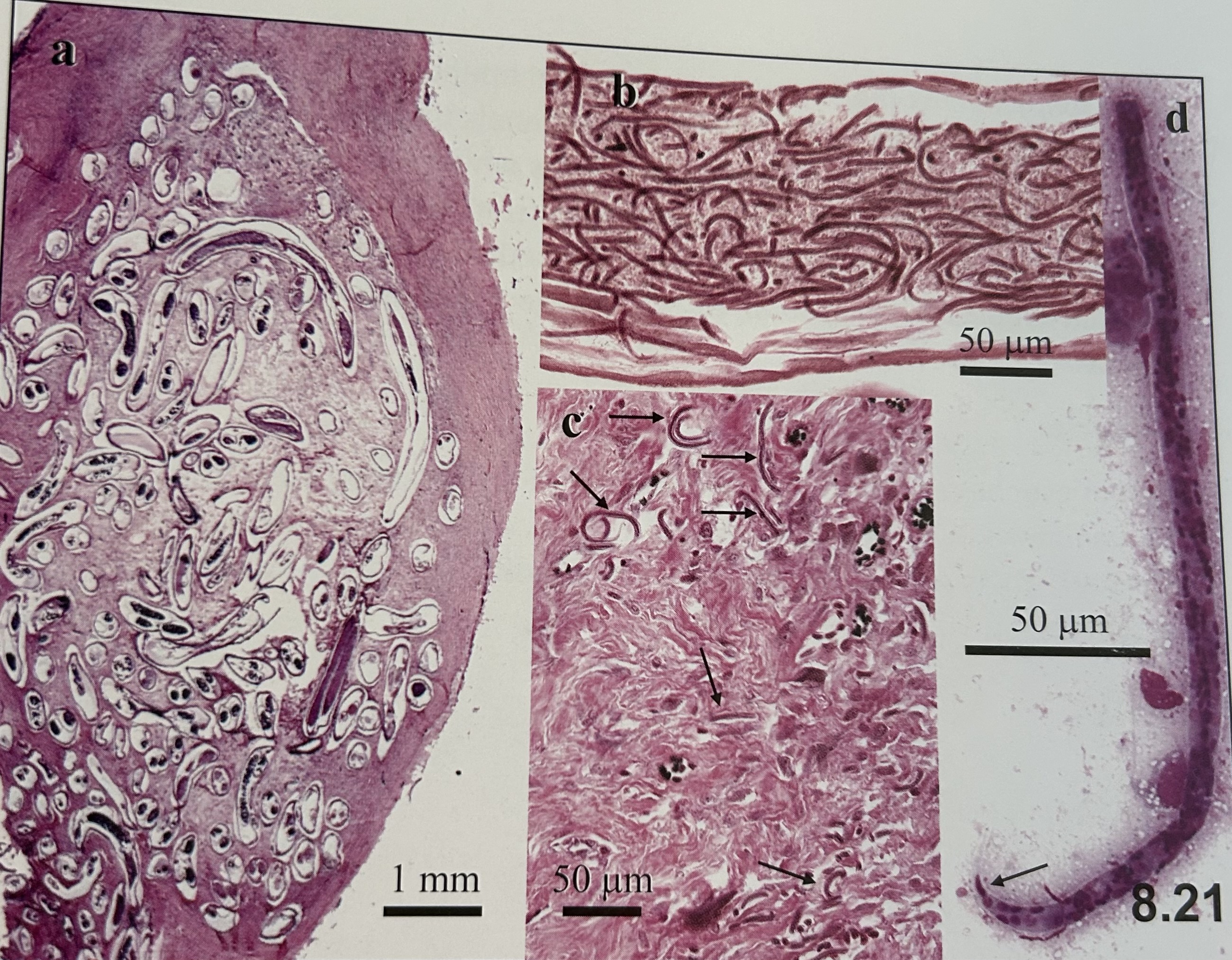
developmental stage?
Onchocerca volvulus (adult)